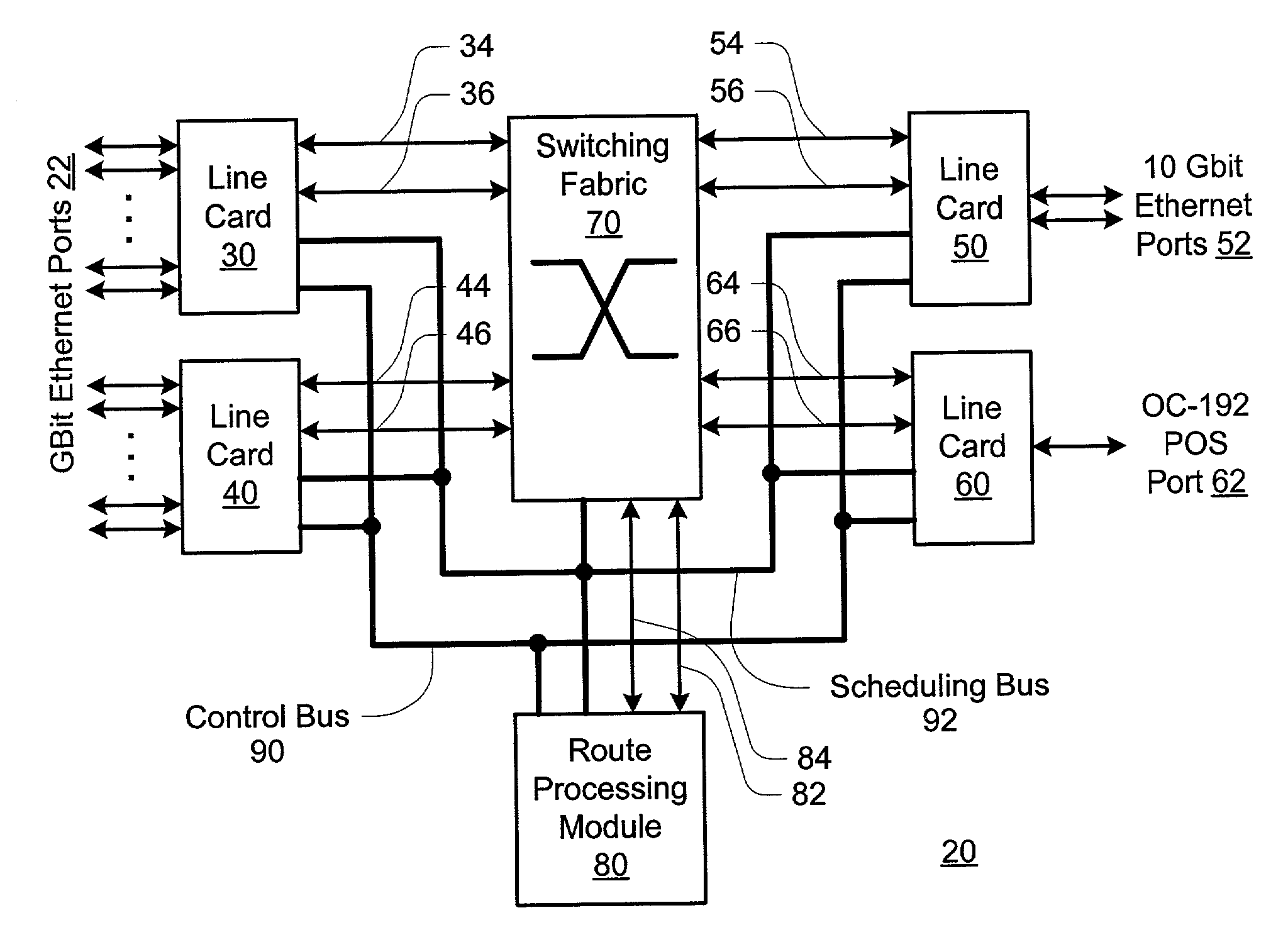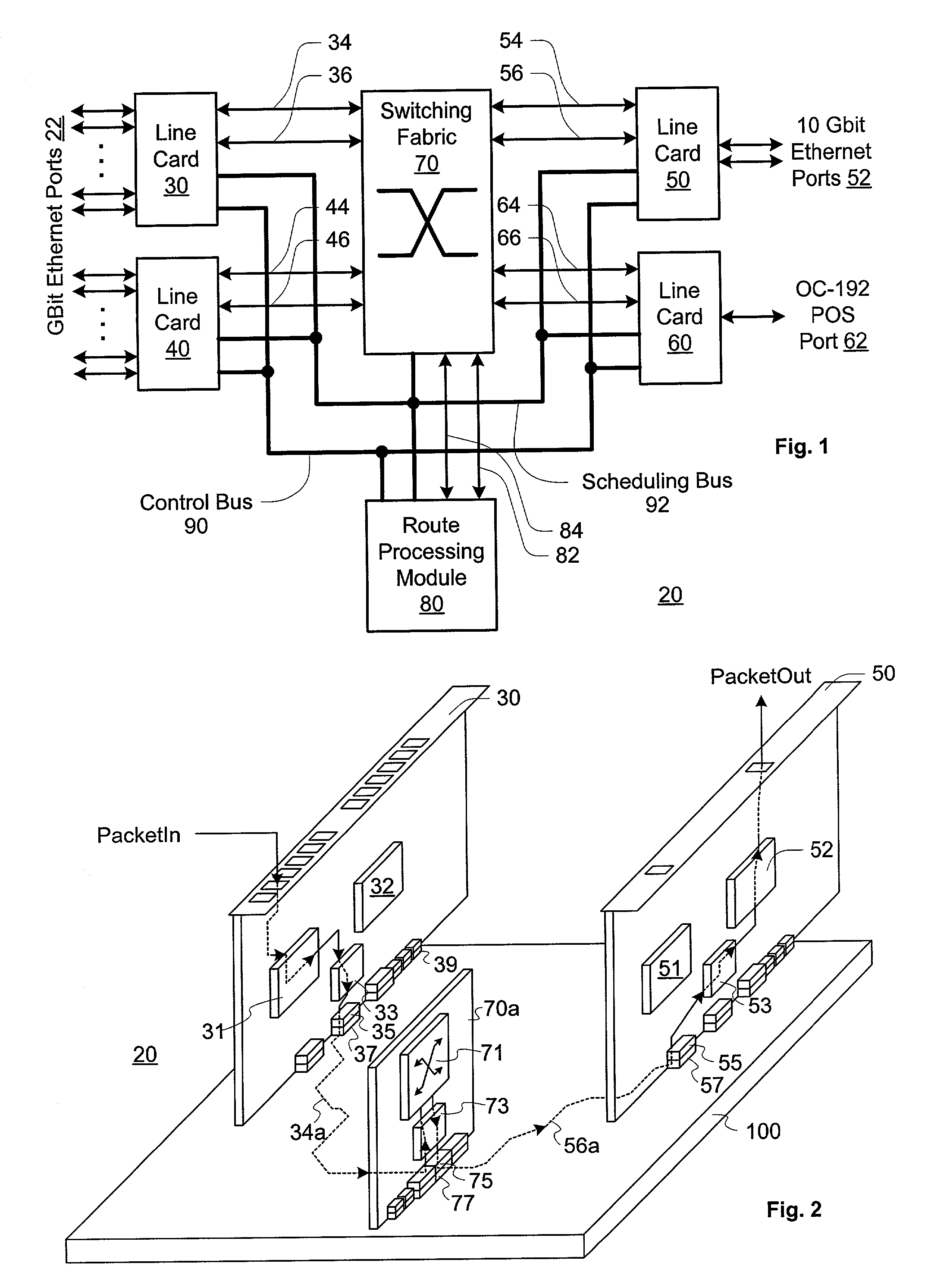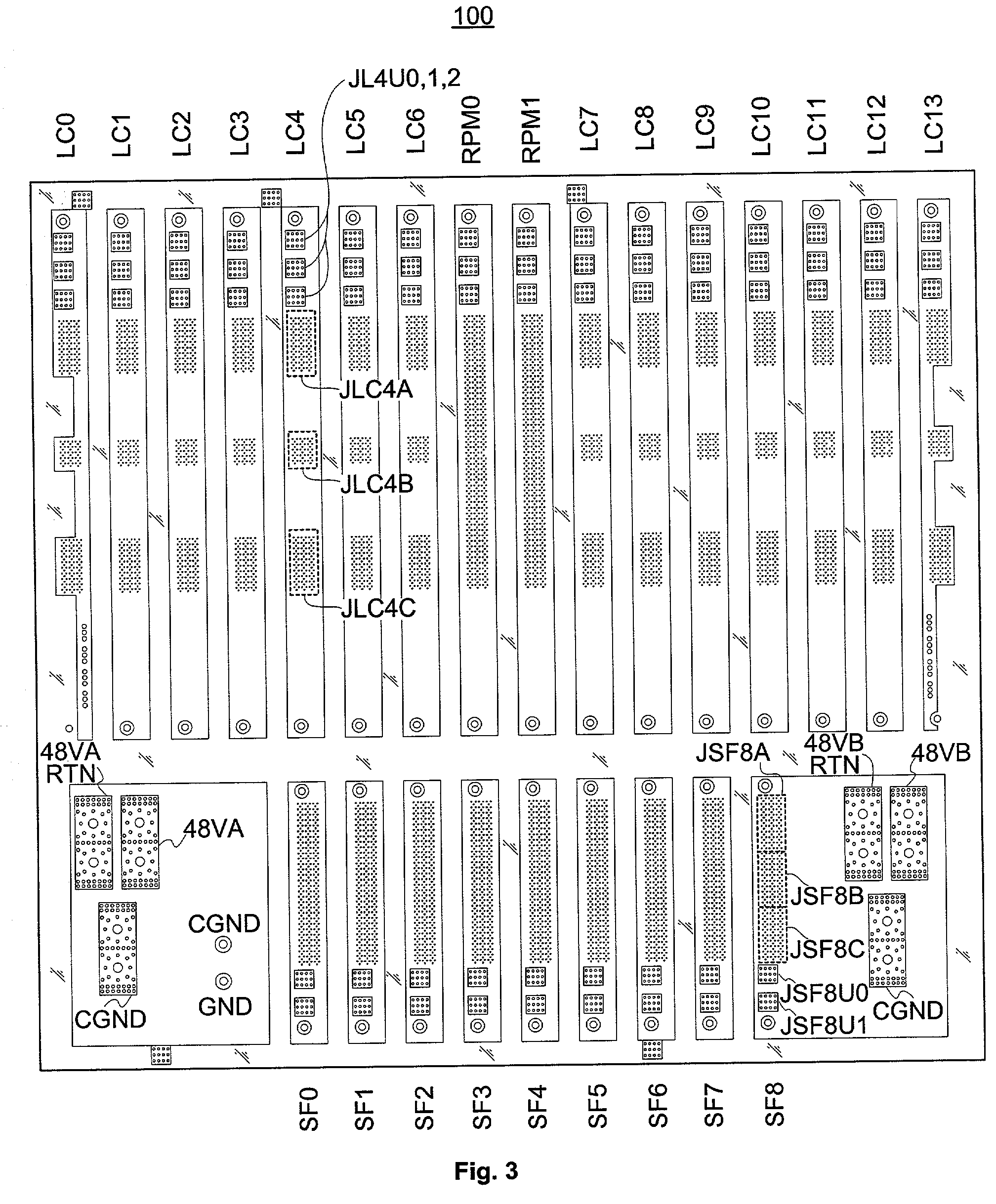High-speed router with single backplane distributing both power and signaling
a high-speed router and backplane technology, applied in the field of routers, can solve the problems of preventing the growth of large router throughput, hindering the growth of optical backplanes, and becoming infeasible to build large parallel point-to-point connection buses
- Summary
- Abstract
- Description
- Claims
- Application Information
AI Technical Summary
Benefits of technology
Problems solved by technology
Method used
Image
Examples
Embodiment Construction
1 Definitions
[0034]Several terms have been assigned particular meanings within the context of this disclosure. As used herein, high speed signaling refers to signaling on a differential signal pair at a data rate greater than about 2.5 Gbps. A high-speed signaling layer or high-speed differential trace plane contains high-speed differential signal trace pairs, but may also contain lower speed and / or single-ended traces. A core dielectric layer is one that is cured and plated prior to assembly of a circuit board. A b-stage dielectric layer is one that is cured during assembly of cores into the circuit board. Differential signaling (or balanced signaling) is a mode of signal transmission, using two conductors, in which each conductor carries a signal of equal magnitude, but opposite polarity. Single-ended signaling (or unbalanced signaling) is a mode of signal transmission where one conductor carries a signal with respect to a common ground. The impedance of a differential trace is mo...
PUM
 Login to View More
Login to View More Abstract
Description
Claims
Application Information
 Login to View More
Login to View More - R&D
- Intellectual Property
- Life Sciences
- Materials
- Tech Scout
- Unparalleled Data Quality
- Higher Quality Content
- 60% Fewer Hallucinations
Browse by: Latest US Patents, China's latest patents, Technical Efficacy Thesaurus, Application Domain, Technology Topic, Popular Technical Reports.
© 2025 PatSnap. All rights reserved.Legal|Privacy policy|Modern Slavery Act Transparency Statement|Sitemap|About US| Contact US: help@patsnap.com



